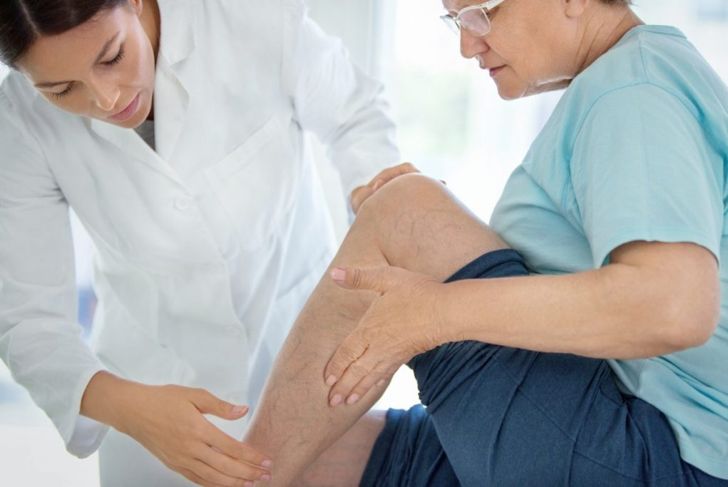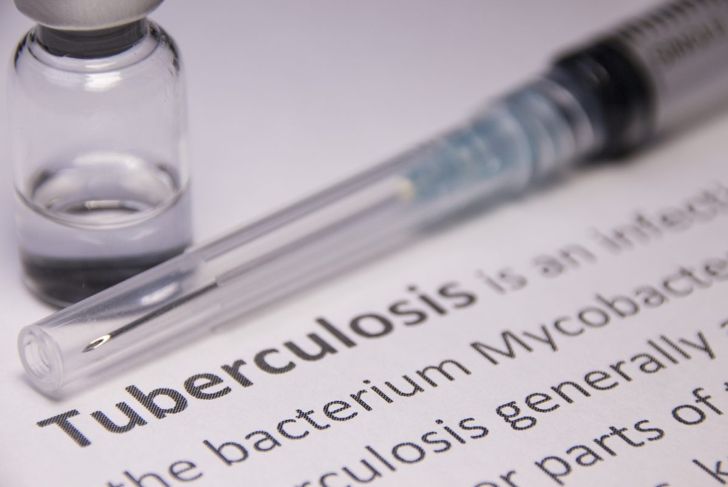Mottled skin, a piebald-like purple or blue coloration on the skin, is caused by a vascular condition. The discoloration often resembles a web or lace-like pattern. Mottled skin usually develops on the legs and feet, but it can occur anywhere on the body. While a direct cause is not known, there are a large number of conditions with links to mottled skin.
Classifying Mottled Skin
Experts refer to mottled skin as livedo reticularis. This is a term that describes a variety of conditions that feature mottled discoloration of the skin. “Livedo” describes the mottling color, while “reticular” describes its unique patterning. In some cases, doctors classify the issue more specifically, using terms such as
Cutis marmorata: variable mottling
Cutis marmorata telangiectatica congenita: rare congenital condition, persistent mottling
Primary livedo reticularis: most common form, benign, unknown cause, affects mostly young women during winter
Secondary livedo reticularis: livedo with an underlying systemic issue
Livedo racemosa: widespread and persistent form
Underlying Mechanism
People develop mottled skin when something disturbs the blood flow near the skin’s surface, resulting in lower oxygen tension. The discoloration occurs due to higher levels of deoxygenated hemoglobin. Constriction of the blood vessels in response to cold temperatures can cause temporary discoloration or exaggerate already existing mottling. Local heat injuries sometimes produce a similar response.
Obstructions
Any condition that obstructs the blood vessels or causes them to spasm could cause mottled skin. Other symptoms, such as the extremities turning blue or purple, may occur alongside the mottling. Conditions that can obstruct the blood vessels include hypercalcemia, antiphospholipid syndrome, and arteriosclerosis. Cryoglobulinemia can cause blood clots in cold conditions, resulting in severe mottling.
Vasculitis Autoimmune or Connective Tissue Conditions
Secondary livedo reticularis is less common than the primary form. It results largely from autoimmune and connective tissue conditions, including lymphoma, pancreatitis, rheumatoid arthritis, and lupus. Conditions responsible for secondary livedo reticularis can also sometimes cause livedo racemosa, and often, this other type of mottled skin is the first sign of the former condition.
Infections
Many viral, bacterial, and fungal infections can trigger skin mottling. Tuberculosis, syphilis, parvovirus, and hepatitis C are among the most prevalent causes. Mottled skin may be also a sign of bacterial sepsis from a streptococcal or meningococcal disease. A very rare form of cytomegalovirus infection can cause persistent livedo reticularis.
Drugs and Medications
Skin mottling may also develop due to drugs, medications, and their methods of use. For example, inserting a needle into the skin can cause temporary livedo reticularis. Skin mottling is also a potential side effect of many medications, including common treatments for multiple sclerosis, ADHD, narcolepsy, and Parkinson’s disease.
End-of-Life Symptom
Livedo reticularis commonly develops in people who are in their end-of-life stage. As a person approaches the end of their life, their body begins to slow circulation. This first presents as mottling in the hands and feet that spreads to the rest of their body. The skin may become paler and feel cold to the touch. Factors like underlying conditions or the presence of a catheter may make the mottling more prominent.
When to See a Doctor
Most cases of livedo reticularis do not need treatment. However, there are a few signs that medical intervention is necessary:
Mottled skin does not vanish in warmer conditions
Other worrying symptoms occur
Painful nodules develop near the mottled skin
Ulcers develop in the area
The individual already has lupus or another connective tissue disorder
Treatments
Mottled skin does not have a specific treatment. Because most cases do not have a clear trigger, doctors must first perform a biopsy to diagnose the underlying cause. Experts can treat vascular diseases with blood pressure medications and patients can undertake lifestyle changes that may help. Autoimmune diseases may require medications that control the immune response and reduce inflammation. Heated blankets and multiple layers of clothes can improve livedo reticularis resulting from cold temperatures.
Prevention
The causes of livedo reticularis are varied and numerous, but it is possible to lower the risk of developing mottled skin by making a few lifestyle changes. Avoid cold environments and take additional efforts to stay warm in lower temperatures. Smoking can cause [citation href=”https://torbayandsouthdevon.nhs.uk/uploads/23528.pdf” title=”NHS” desc=”Smoking and your circulation”]circulation problems that may lead to mottled skin. Maintaining a healthy diet and exercise routine can help prevent some of the conditions responsible for livedo reticularis.

 Home
Home Health
Health Diet & Nutrition
Diet & Nutrition Living Well
Living Well More
More




















